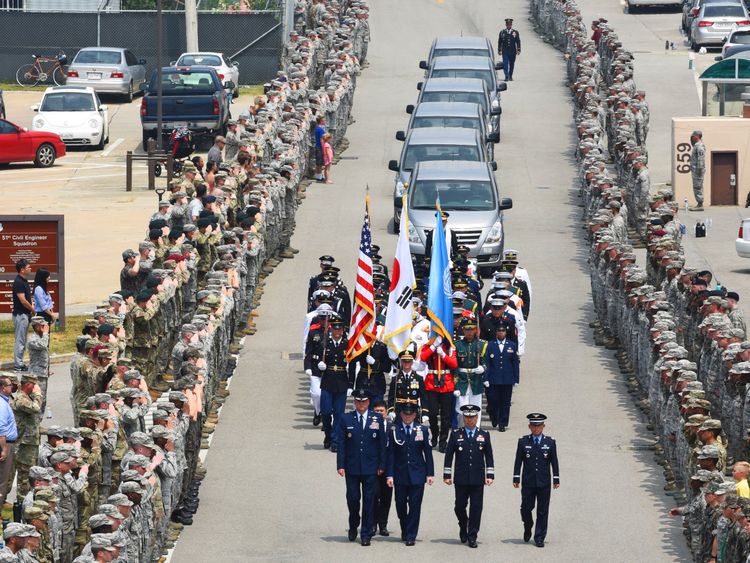More than six decades after fighting in the Korean War ended, the remains of some of the US soldiers killed in the conflict are back on American soil.
But in order to prove who they were, and that they are fallen US soldiers, the remains will have to undergo tests in a military lab in Hawaii.
The first steps in identification will be checking dog tags, or scraps of clothing, which can be traced to the material used in uniforms.
Teeth will be matched to dental records where available, and bones can be used to estimate height.
In some cases, the distinctive shape of the clavicle bone can match records of X-rays taken to look for tuberculosis many decades ago.
Timothy McMahon, director of defence department DNA operations, will receive any samples in needs of DNA testing. They are sent to a lab in Delaware.
He said that even tiny samples of bone or teeth, around the size of the last joint in a little finger, can yield usable DNA for identification.
In the DNA lab, each sample is sanded to remove surface contamination before being ground down to the consistency of baby powder.
The powder is treated with a substance which dissolves the bone and leaves the DNA for analysis.
The DNA will be compared with genetic samples from living people who are related to the missing people.
The military has collected samples from relatives of the missing since 1992, and has DNA for 92% of the relatives of the 8,100 soldiers listed as missing at the end of the war.
Scientists will want to find DNA in common between known relatives and the unknown soldiers, suggesting they both belong to a particular lineage.
The Dover lab once linked remains to a great-great-great-great-grand niece, who did not know she was related to a missing serviceman.
If a link is found, scientists will work out how strongly it suggests the remains belong to a particular missing serviceman before sending results back to Hawaii, where it is combined with other lines of evidence.

Mr McMahon said: "We're just one spoke in a wheel to make the identification. We all work together."
Identification can be a quick process, with some matches coming to light within three days, if a clavicle bone could be matched to an X-ray.
However some cases take decades to solve and many remain unmatched.
More from Donald Trump
Some of the remains recovered from North Korea between 1990 and 2005 have still not been identified.
The lab in Hawaii has identified 25 service members from the Korean War since 1 October 2017.
[contf] [contfnew] 
Sky News
[contfnewc] [contfnewc]






